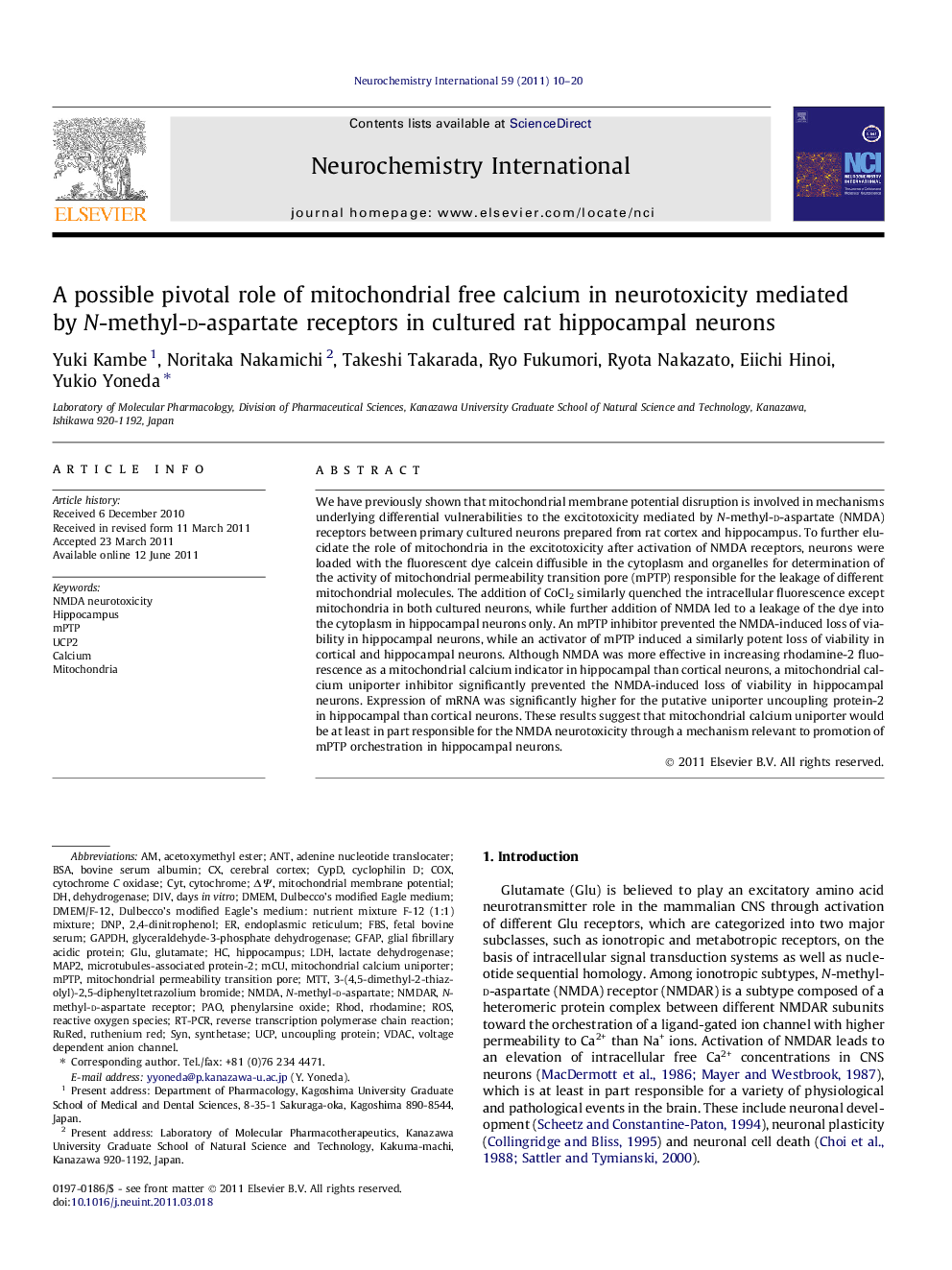| Article ID | Journal | Published Year | Pages | File Type |
|---|---|---|---|---|
| 2201320 | Neurochemistry International | 2011 | 11 Pages |
We have previously shown that mitochondrial membrane potential disruption is involved in mechanisms underlying differential vulnerabilities to the excitotoxicity mediated by N-methyl-d-aspartate (NMDA) receptors between primary cultured neurons prepared from rat cortex and hippocampus. To further elucidate the role of mitochondria in the excitotoxicity after activation of NMDA receptors, neurons were loaded with the fluorescent dye calcein diffusible in the cytoplasm and organelles for determination of the activity of mitochondrial permeability transition pore (mPTP) responsible for the leakage of different mitochondrial molecules. The addition of CoCl2 similarly quenched the intracellular fluorescence except mitochondria in both cultured neurons, while further addition of NMDA led to a leakage of the dye into the cytoplasm in hippocampal neurons only. An mPTP inhibitor prevented the NMDA-induced loss of viability in hippocampal neurons, while an activator of mPTP induced a similarly potent loss of viability in cortical and hippocampal neurons. Although NMDA was more effective in increasing rhodamine-2 fluorescence as a mitochondrial calcium indicator in hippocampal than cortical neurons, a mitochondrial calcium uniporter inhibitor significantly prevented the NMDA-induced loss of viability in hippocampal neurons. Expression of mRNA was significantly higher for the putative uniporter uncoupling protein-2 in hippocampal than cortical neurons. These results suggest that mitochondrial calcium uniporter would be at least in part responsible for the NMDA neurotoxicity through a mechanism relevant to promotion of mPTP orchestration in hippocampal neurons.
► NMDA induces mPTP permeable for cytochrome-C in hippocampal neurons vulnerable to its neurotoxicity. ► An mPTP inhibitor prevents the NMDA-induced loss of hippocampal neuronal viability, with exacerbation by an mPTP inducer. ► NMDA more rapidly increases mitochondrial calcium levels in vulnerable hippocampal neurons than resistant cortical neurons. ► A mitochondrial calcium transport inhibitor prevents the NMDA-induced loss of hippocampal neuronal viability. ► Mitochondrial calcium would be responsible for NMDA neurotoxicity through promotion of mPTP in hippocampal neurons.
